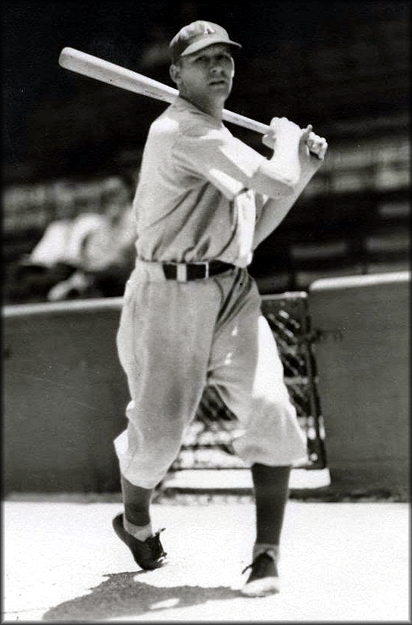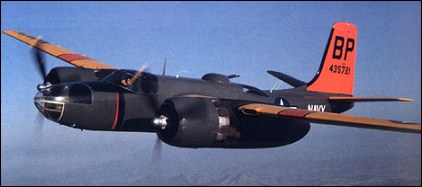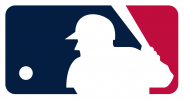For quite a few Americans Memorial Day is nothing more than a day off and a bbq. When asked what Memorial Day means many will answer “first day of summer.” Sadly the real reason for Memorial Day, the remembrance of those who have fallen in order to secure our great nation, is fading away from our consciousness like so many other important events in our nation.
Since the formation of baseball’s first professional league, the National Association in 1871, there have been major league players who have sacrificed their careers and sometimes their lives to protect our way of life.
Major League Baseball is woven tightly into the fabric of America. The game is a reflection of who we are as a nation and a people. Baseball is as much of a symbol of America as the Statue of Liberty and the flag. So it is not a surprise that throughout our history we find pro-baseball players involved in defending this country and sometimes dying for it.
One of the first big league players to fight and eventually give his life for America was Bill Stearns (1853-1898) who played in the National Association as a pitcher and outfielder for several teams including the Washington Nationals. Stearns had a history of serving the country. At the age of 12 he was serving in the Union army, though what capacity we do not know but many young boys were used as drummer boys, message boys, and working in supplies.
When war broke out against Spain in 1898, Stearns enlisted with the US Army and served with Company H of the First District of Columbia Volunteers. Stearns participated in the fighting in Puerto Rico as a military engineer and contracted a serious stomach virus while theres. Stearns was sent home to Washington, D.C. where he died on December 30, 1898.
World War I (US participation from 1917-1918) had 11 players from Major League Baseball and the Negro Leagues die as a result of their service. During the war the minor leagues were suspended and the 1918 season was ended on Labor Day.
The most prominent player to be lost during WWI was Eddie Grant (1883-1918). Grant was a Major League third baseman who played more than 1,000 games with the Cleveland Naps (present day Cleveland Indians), Philadelphia Phillies, Cincinnati Reds, and New York Giants (present day San Francisco Giants) from 1905 until 1915. Grant, a veteran of the “deadball era,” retired with a .249 average, hitting five home runs and driving in 277 RBI’s.

A Harvard trained lawyer when America entered WWI on April 4, 1917, Grant was one of the first to enlist in the Army. Grant was a Captain with Company H, 307th infantry regiment, 77th infantry division when deployed to France.
On September 26th, 1918 Allied forces began the Meuse-Argonne offensive (Battle of the Argonne Forest), the largest military offensive in US history with 1.2 million American soldiers and Marines engaged, Captain Grant and Company H found themselves engaged in heavy fighting with German forces.
On October 4th, nine companies of the 77th division (554 men) found themselves completely surrounded and cut off by German forces. Grant, now in charge of H Company after every superior officer in the company had been killed earlier in the fighting, set out to locate what would be known as the “Lost Battalion.” On October 5th during a German artillery barrage, Grant was killed by one of the exploding artillery rounds. Grant became the first major leaguer to be killed in action in World War I. He is buried at the Meuse-Argonne American Cemetery in Lorraine, France.
Upon the news of Grant’s death, Baseball Magazine wrote, "Eddie Grant . . . has played his last game of baseball. He fell in the forefront, of an attacking column in that desperate fight which cleared the Argonne forest of its German invaders. Somewhere in France his grave is topped with a simple wooden cross, the last eloquent tribute to the soldier dead. But the memory of a brave man and a gallant gentleman will adorn the annals of sport long after the wooden cross has crumbled beneath the winds and ruins of that France he died to save."
On Memorial Day, May 29, 1921 Major League Baseball, representatives of the US military, and the daughters of Grant were in attendance at the Polo Grounds in New York City, the home of the then New York Giants, for the unveiling of a monument in center field honoring Grant. A replica of the plaque from the Grant monument is now located at AT&T Park, the home of the San Francisco Giants.
During World War II (American involvement from 1941-1945) more than five hundred major leaguers served, including 34 future members of the Hall of Fame. Incredibly only two major leaguers were lost in combat and both were age 27.
Elmer Gedeon (1917-1944) was signed by the Washington Senators immediately following his graduation from the University of Michigan in 1939. Considered a top prospect of the Senators his career was halted when he was drafted by the Army in 1941.
Gedeon spent the first 67 games of the 1939 season with the Orlando Senators, Washington’s Class-D farm team in Orlando, Florida. He was one of the big league Senators September call-ups during the ‘39 season and went 3-for-3 in a game against the Cleveland Indians and played centerfield.
Gedeon spent the 1940 season with the Charlotte Hornets (Class-B) where he batted .271 in 131 at-bats until he was once again a September call-up. He did not appear in any games with the big league club.
The Senators anticipated that the 1941 season would see Gedeon beginning the season with the Springfield Nationals (Class-A) and then possibly starting in center for the Senators before the end of the year. Gedeon’s draft notice put an end to the Senator’s plans and in the end, Gedeon’s baseball career.
Gedeon graduated from flight school and was commissioned as a second lieutenant in May 1942. He was soon flying on a B-25 bomber as a navigator. On August 9, 1942 he proved his valor when the B-25 he was flying in during a training mission crashed into a swamp after take off from Raleigh, North Carolina. With the bomber burning and suffering broken bones and burns, Gedeon was able to crawl through the plane and rescue a crewmate. Two other crewmembers died in the crash. Gedeon, recovering in a hospital for 12 weeks, was awarded the Soldier’s Medal for his bravery in the rescue of his fellow crewmember.
Before transferring to Europe where he would pilot a B-26 Marauder, Gedeon gave an interview with Associated Press in February of 1943. In the interview headlined “Gedeon Will Return to Baseball If War Doesn’t Last Too Long,” Gedeon proclaimed, “It’s a matter of time. If the war ends before I’m past the playing age I’ll return to the game. If I’m too old, I’ll do something else.”
On April 20, 1944 with Gedeon at the controls of one of 36 B-26 bombers, they departed their base at RAF Boreham, England en route to attack a German V-1 base located at the village of Esquerdes in occupied France. As the bombers approached their target just after dusk at an altitude of 12,000 ft. they began receiving heavy anti-aircraft fire that shook the planes violently. After releasing their bombs Gedeon turned the bomber back towards England. It was then that shrapnel from the exploding anti-aircraft artillery rounds struck the bomber below the cockpit. The damaged B-26 caught fire and turned nose down toward the French countryside below. Gedeon’s co-pilot, James Taaffe fought his way through the burning aircraft to a door and parachuted out with his clothes on fire. Taaffe was captured by the Germans and imprisoned until the end of the war.
Gedeon was listed as missing in action along with the remaining five crew members of the B-26. Following Nazi Germany’s surrender in May 1945 Gedeon’s body was recovered in a grave in a British military cemetery at Saint-Pol, France. His body was exhumed and returned to the US where he was buried in Arlington National Cemetery with full military honors. The promising Major League Baseball career of the Washington Senators prospect had come to an end.
The other Major League Player to be lost during World War II was Philadelphia A’s catcher Harry O’Neill (1917-1945). After graduating from Gettysburg College in 1939 a bidding war erupted between the Washington Senators and Philadelphia A’s. Many felt that O'Neill would sign with the Senators but ended up shocked when A’s owner Connie Mack got O’Neil to sign on the dotted line with the hometown team on June 5 of that year.

The A’s did not send O’Neil to the minors as was normally done. Instead he was placed on the A’s roster as the team’s third catcher. O'Neill made his only Major League appearance on July 23, 1939 when he replaced A’s starting catcher Frankie Hayes in the eighth inning of a 16-3 loss to the Detroit Tigers. O'Neill finished the game but was never able to make a plate appearance.
Following the 1939 season O’Neill was sent down to the minors. O’Neil played semi-pro football and basketball in the offseason and also taught history at Upper Darby Junior High School. During the 1940 and 1941 baseball season he played for the Class-B Harrisburg Senators.
In September of 1942 O’Neill enlisted in the United States Marine Corps and graduated from Officer’s Candidate School at Quantico, Virginia where he was commissioned as a second lieutenant. O'Neill was soon assigned to the 4th Marine Division at Camp Pendleton where he began infantry training.
In January of 1944 newly promoted first Lieutenant O’Neill and the 25th Regiment of the 4th Marine Division were placed on alert for combat duty in the South Pacific against the Japanese. O’Neill’s wife Ethel arrived in southern California from their home in Pennsylvania to spend their final days together before he shipped out.
After O’Neill kissed his wife goodbye for what turned out to be the last time, he and the 4th Marines shipped out to the Pacific Theater. Serving with the 4th Marines 25th Weapons Company, O’Neil was part of the amphibious landing at Kwajalein on January 31. He was also part of the invasion of Saipan in June 1944 in which he was wounded in the shoulder by flying shrapnel and sent back to the US to recover.
On February 19, 1945 O’Neill and the 4th Marines came ashore on the island of Iwo Jima. The move inland was slow and agonizing as the Marines struggled to dig foxholes to protect them from the heavy Japanese fire that was raining down on them. Each time they dug in to the volcanic ash that covered the island the hole would fill part of the way back in. At night the Japanese would slip through the Marines perimeter and attack them in their foxholes. The screams of the attackers and the wounded filled the night air.

After a day of heavy shelling by Marine artillery, O’Neill’s 4th Marine Division along with Marines from the 3rd and 5th Marines attacked the Japanese at the Bloody Turkey Knob section of Iwo Jima on March 6. It had been 11 days since the Marines historic flag raising on Mt. Suribachi and the fighting seemed to be only intensifying. The Japanese weren’t surrendering, choosing death instead. O’Neill and his fellow Marines were having to root out every one of the 22,000 Japanese defenders.
As the sun set on March 6 O’Neill stood with other Marines in a crater that everyone felt was deep enough to provide cover from Japanese gunners. As O’Neill surveyed the terrain in front of him a sniper fired a single bullet that tore through his throat, severing the spinal cord and killing him instantly.
It only took five years from the end of World War II in 1945 before America was once again called back to the battlefield. With the North Korean invasion of South Korea President Harry S. Truman sent American forces as part of a United Nations force to aid the South Koreans in pushing the North Koreans back. Robert Neighbors (1917-1952?) would eventually be one of them.
Neighbors was signed by the St. Louis Browns as shortstop in 1936 and was assigned to the minors. He eventually was a September call up for the Browns in 1937 but did not appear in a game. Neighbors returned to the minors until 1939 when his 14 homers and 80 RBI’s earned him another September call up. This time Neighbors made it on to a big league field on September 16. He ended up appearing in seven games, getting two hits in 11 at bats.
The Browns sent Neighbors back down to the minors where he played until his wife was hit by a car and killed in during the summer of 1941. Following her death Neighbors quit professional baseball all together and joined the Army Air Force.
Neighbors didn’t give up baseball completely. He continued to play the game he loved on teams in the Army. During WWII he played on teams with such Major League stars as Dave Short of the Chicago White Sox and Ray Poole of the A’s.
Neighbors flew transport aircraft during WWII and did not see any combat. As the Korean War began Neighbors became a B-26B Invader pilot with the Air Force’s 13th Bomb Squadron of the 3rd Bomber Group. On August 9, 1952 Neighbors and his squadron were based at Kunsan Air Base in South Korea. Not scheduled to fly that night, Neighbors and his crew volunteered to replace a crew that fell ill. As they flew over their target in North Korea unexpectedly heavy surface to air missile fire erupted all around them. They radioed that they had been hit and were preparing to bail out. Their exact location was unknown and they were listed as missing in action. In August of 1953 North Korea returned 262 of 700 known American POW’s. Neighbors, First Lieutenant William Holcom and Staff Sergeant Grady Weeks were not part of the 262 who returned and remain missing to this day.

The National Baseball Hall of Fame and Museum at Cooperstown proclaims: "Ballplayers, like every other American citizen, understand the importance of giving one's self for their country."
Major League/Negro League players who died during America's wars since 1898.
Spanish-American War
Bill Stearns
Pitcher
National Association
Branch: Army
Died: 12/30/1898
Location: Washington, DC
Cause: Stomach Virus
WWI
Outfielder
New York Yankees
Branch: Army Air Force
Died: 10/12/1918
Location: Cazaux, France
Cause: Planes Collided
Catcher
Chicago Cubs, Cincinnati Reds, St. Louis Browns
Died: 10/21/1918
Location: Camp Clark, MO
Cause: Combat Wounds
Branch: Army
Outfielder
Chicago White Sox, Cleveland Indians, Boston Braves
Died: 11/08/1918
Cause: Influenza
Location: San Francisco, CA
Branch: Army
Catcher
St. Louis Cardinals
Died: 10/12/1918
Cause: Pneumonia
Location: St. Paul, Minnesota
Branch: Army
Edward Grant
Third Base
Cleveland Naps, Philadelphia Phillies, Cincinnati Reds, New York Giants
Died: 10/05/1918
Cause: KIA
Location: Argonne, France
Branch: Army
First Base
Pittsburgh Pirates
Died: 04/06/18
Cause: Tuberculosis
Location: Great Lakes, IL
Branch: Navy
Ted Kimbro
Third Base
Negro Leagues
New York Lincoln Giants
Died: 09/29/1918
Cause: Influenza
Location:Camp Dix, NJ
Branch: Army
Outfielder
Philadelphia A's
Died: 05/24/18
Cause: Drowned
Location: Camp Sheridan, AL
Branch: Army
Norman Triplett
Outfielder
Negro Leagues
Hilldale Athletic Club
Died: 10/20/1918
Cause: Pneumonia
Location: France
Branch: Army
Pitcher
Detroit Tigers
Died: 10/07/1918
Cause: KIA
Location: Battle of the Argonne Forest, France
Branch: Army
Pearl Webster
Catcher
Negro Leagues
Grand Central Terminal Red Caps
Died: 11/16/18
Cause: Spanish Flu
Location: France
Branch: Army
WWII
Elmer Gedeon
Outfield
Washington Senators
Died: 04/20/1944
Cause: KIA/Shot Down
Location: France
Branch: Army Air Force
Harry O'Neill
Catcher
Philadlephia A's
Died: 03/06/1945
Cause: KIA
Location: Battle of Iwo Jima, Japan
Branch: Marine Corps
Korea
Robert Neighbors
Shortstop
St. Louis Browns
Died: 08/08/1952?
Cause: MIA/Shot Down
Location: North Korea
Branch: Air Force






































